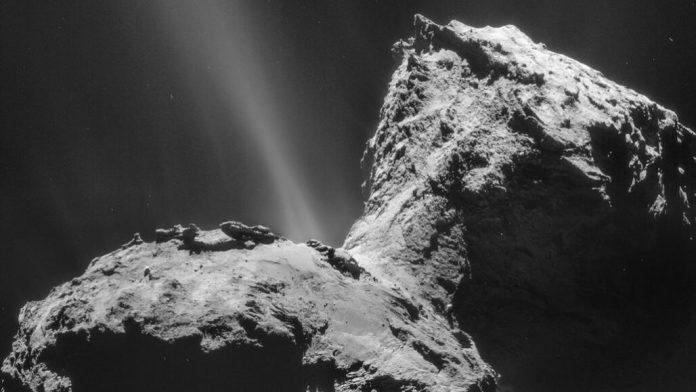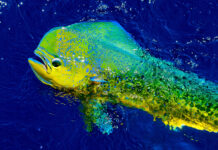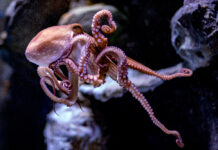On Earth, aurora are generated when electrically charged particles speeding from the Sun hit the upper atmosphere to create colorful shimmers of green, white, and red.
Elsewhere in the Solar System, Jupiter and some of its moons — as well as Saturn, Uranus, Neptune, and even Mars — have all exhibited their own version of aurora.
The Rosetta spacecraft escorted comet 67P/Churyumov-Gerasimenko for more than two years.
The data for the current study is on what the Rosetta scientists initially interpreted as ‘dayglow,’ a process caused by photons interacting with the coma that radiates from, and surrounds, the comet’s nucleus.
But the new analysis of the Rosetta data paints a very different picture.
“The glow surrounding 67P/Churyumov-Gerasimenko is one of a kind,” said lead author Dr. Marina Galand, a researcher at Imperial College London.
“By linking data from numerous Rosetta instruments, we were able to get a better picture of what was going on.”
“This enabled us to unambiguously identify how 67P/Churyumov-Gerasimenko’s ultraviolet atomic emissions form.”
The data indicate 67P/Churyumov-Gerasimenko’s emissions are actually auroral in nature.
Electrons streaming out in the solar wind interact with the gas in the comet’s coma, breaking apart water and other molecules. The resulting atoms give off a distinctive far-ultraviolet light.
Invisible to the naked eye, far-ultraviolet has the shortest wavelengths of radiation in the ultraviolet spectrum.
Exploring the emission of 67P/Churyumov-Gerasimenko will enable the researchers to learn how the particles in the solar wind change over time, something that is crucial for understanding space weather throughout the Solar System.
By providing better information on how the Sun’s radiation affects the space environment they must travel through, such information could ultimately can help protect satellites and spacecraft, as well as astronauts traveling to the Moon and Mars.
“Rosetta is the gift that keeps on giving,” said co-author Dr. Paul Feldman, a scientist at Johns Hopkins University.
“The treasure trove of data it returned over its two-year visit to the comet have allowed us to rewrite the book on these most exotic inhabitants of our Solar System — and by all accounts there is much more to come.”








